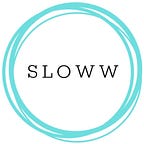Understanding Your Brain: Connecting “The Golden Circle” (Simon Sinek) & “The Three Layers of Behavior Change” (James Clear)
I couldn’t help but notice a similarity between the books Atomic Habits by James Clear and Find Your Why (also Start With Why) by Simon Sinek.
They all talk about the brain. But, instead of presenting the brain in a complex fashion that makes your eyes glaze over, they boil the brain down to three simple circles.
Let’s compare the two models to see what we can learn when we overlay both together. I’ve added bold to quotes throughout for emphasis.
Why is it worth learning about how your brain works?
“The world has changed much in recent years, but human nature has changed little.” — James Clear
Connecting The Golden Circle (Simon Sinek) & The Three Layers of Behavior Change (James Clear)
The Golden Circle: Start With Why / Find Your Why by Simon Sinek
The Three Layers of Behavior Change: Atomic Habits by James Clear
Understanding How Your Brain Works:
- “Here’s the best part: This is not our opinion. This whole concept of WHY is grounded in the tenets of biology of human decision making. How the Golden Circle works maps perfectly with how our brain works.” — Find Your Why
- “The earliest remains of modern humans, known as Homo sapiens sapiens, are approximately two hundred thousand years old. These were the first humans to have a brain relatively similar to ours. In particular, the neocortex — the newest part of the brain and the region responsible for higher functions like language — was roughly the same size two hundred thousand years ago as today. You are walking around with the same hardware as your Paleolithic ancestors.” — Atomic Habits
- “The outer section of the Golden Circle — the WHAT — corresponds to the outer section of the brain — the neocortex. This is the part of the brain responsible for rational and analytical thought. It helps us understand facts and figures, features and benefits. The neocortex is also responsible for language.” — Find Your Why
- “The middle two sections of the Golden Circle — the WHY and HOW — correspond to the middle section of the brain, the limbic system. This is the part of the brain responsible for all our behavior and decision making. It’s also responsible for all our feelings, like trust and loyalty. But unlike the neocortex, the limbic system has no capacity for language. This is where ‘gut feelings’ come from. It’s not our stomach. It’s a feeling we get about a decision we have to make that we struggle to explain.” — Find Your Why
- “We can only be rational and logical after we have been emotional. The primary mode of the brain is to feel; the secondary mode is to think. Our first response — the fast, nonconscious portion of the brain — is optimized for feeling and anticipating. Our second response — the slow, conscious portion of the brain — is the part that does the ‘thinking.’ Psychologists refer to this as System 1 (feelings and rapid judgments) versus System 2 (rational analysis). The feeling comes first (System 1); the rationality only intervenes later (System 2). This works great when the two are aligned, but it results in illogical and emotional thinking when they are not.” — Atomic Habits
The Inner Section (Limbic System): “WHY” / IDENTITY
- “Changing your identity (what you believe, who we wish to become): This level is concerned with changing your beliefs: your worldview, your self-image, your judgments about yourself and others. Most of the beliefs, assumptions, and biases you hold are associated with this level.” — Atomic Habits
- “Our WHY is our purpose, cause or belief — the driving force behind everything we do.” — Find Your Why
- “The more you repeat a behavior, the more you reinforce the identity associated with that behavior. In fact, the word identity was originally derived from the Latin words essentitas, which means being, and identidem, which means repeatedly. Your identity is literally your ‘repeated beingness.’” — Atomic Habits
- “The ultimate form of intrinsic motivation is when a habit becomes part of your identity. It’s one thing to say I’m the type of person who wants this. It’s something very different to say I’m the type of person who is this.” — Atomic Habits
- “When your behavior and your identity are fully aligned, you are no longer pursuing behavior change. You are simply acting like the type of person you already believe yourself to be.” — Atomic Habits
- “Your habits shape your identity, and your identity shapes your habits.” — Atomic Habits
- “Identity change is the North Star of habit change.” — Atomic Habits
AHA Moment: Who = Why // Who we wish to become is why we do it, and why we do it is because of who we wish to become.
The Middle Section (Limbic System): “HOW” / PROCESSES
- “Changing your process (what you do): This level is concerned with changing your habits and systems: implementing a new routine at the gym, decluttering your desk for better workflow, developing a meditation practice. Most of the habits you build are associated with this level.” — Atomic Habits
- “Our HOWs are the actions we take when we are at our natural best to bring our WHY to life.” — Find Your Why
The Outer Section (Neocortex): “WHAT” / OUTCOMES
- “Changing your outcomes (what you get, what they want to achieve): This level is concerned with changing your results: losing weight, publishing a book, winning a championship. Most of the goals you set are associated with this level of change.” — Atomic Habits
- “Our WHATs are the tangible manifestation of our WHY.” — Find Your Why
What do you think (or feel)? Please let me know in the comments.
Originally published at Sloww | Slow Living in a Fast World | Design a Lighter Life.
